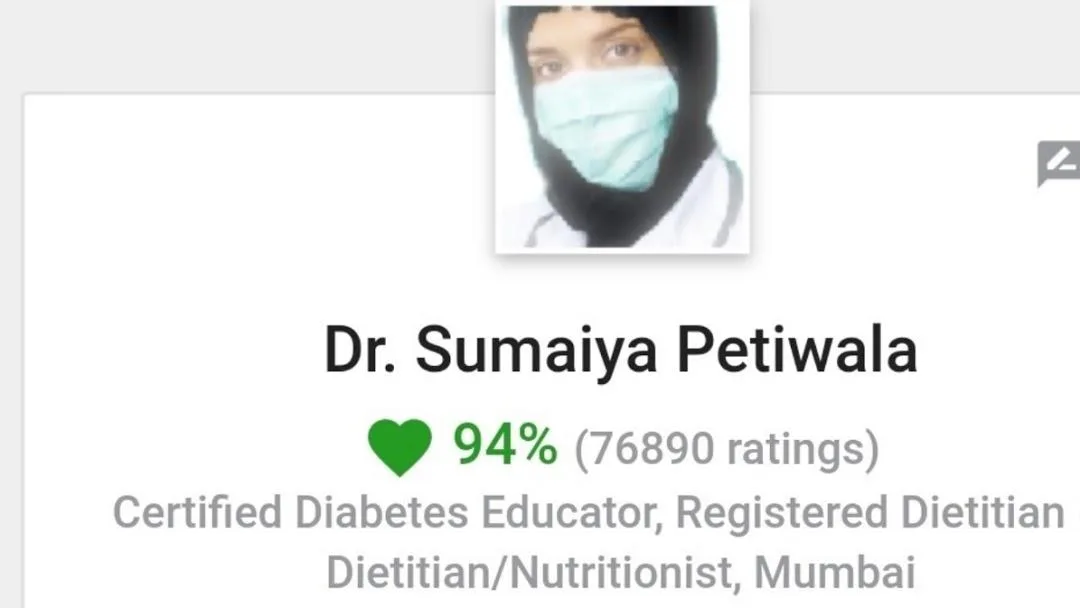Welcome to Dr. Sumaiya’s NutriCare Clinic! Are you diligently pursuing your weight loss goals, yet the scale refuses to budge? You’re definitely not alone. A frequent, often overlooked, dietary factor is the presence of “hidden calories.” These stealthy saboteurs, often found in seemingly “healthy” foods and drinks, can undermine your efforts. As a registered dietitian, I’ve witnessed this countless times. Let’s unravel the mystery of hidden calories, pinpoint their common hiding spots, and equip you with strategies to avoid them.
Table of Contents
- What Exactly Are Hidden Calories?
- Unmasking the Culprits: Where Hidden Calories Lurk
- Detective Work: How to Spot and Dodge Hidden Calories
- Hidden Calories Table (American Foods)
- Hidden Calories Table (Indian Foods)
- Frequently Asked Questions About Hidden Calories in American Foods
- Frequently Asked Questions (FAQ) About Hidden Calories in Indian Foods
- Conclusion: Taking Control
- References
What Exactly Are Hidden Calories?
Hidden calories are the nutritional ninjas—silent, stealthy, and potentially disruptive. They infiltrate your diet unnoticed, adding a significant calorie load to foods and beverages you might perceive as harmless or even healthy. The problem? They can easily exceed your daily calorie needs, leading to weight gain over time. Understanding and managing these hidden calories is crucial for maintaining a healthy weight and supporting an overall healthy lifestyle.

Unmasking the Culprits: Where Hidden Calories Lurk
Sugary Beverages: The Sweet Trap
That morning latte or afternoon soda? They’re more than just a caffeine fix or a thirst quencher. A single can of soda can contain up to 150 calories, and specialty coffee drinks can easily add 300 to 500 calories to your daily intake. The American Heart Association recommends limiting added sugar to 25 grams (6 teaspoons) per day for women and 36 grams (9 teaspoons) for men. Many sugary drinks far exceed these limits in a single serving. Opt for water, herbal teas, or black coffee to minimize your calorie consumption.
Condiments and Dressings: Flavorful Foes
Think that dollop of mayonnaise or drizzle of salad dressing is insignificant? Think again. A tablespoon of mayonnaise contains approximately 90 calories, and many salad dressings can easily add 150 calories or more to your meal. Opt for lighter alternatives like vinaigrette (using a small amount) or use condiments sparingly to keep your calorie intake in check.
Snack Attack: The Calorie Crunch
Packaged snacks, even those labeled “healthy,” can be misleading. Granola bars, chips, and cookies often contain added sugars and unhealthy fats, making them calorie-dense. Choose whole fruits, a small handful of nuts (about 1/4 cup), or homemade snacks to avoid these hidden calories. The Dietary Guidelines for Americans recommend focusing on nutrient-dense snacks.
Dine Out, Pack In: The Restaurant Dilemma
Eating out or grabbing pre-packaged meals? These can be major sources of hidden calories, due to larger portion sizes and the addition of fats, sugars, and salt to enhance flavor. When dining out, choose grilled items, salads (with dressing on the side), and be mindful of portion sizes. Consider taking half of your meal home to avoid overeating.
Detective Work: How to Spot and Dodge Hidden Calories
- Read Food Labels Carefully: Become a label detective. Pay close attention to serving sizes, calorie content, and added sugars.
- Portion Control: Use measuring cups and spoons, and avoid eating directly from the package.
- Healthier Swaps: Choose water over sugary drinks, and opt for fresh or steamed vegetables over fried sides.
- Mindful Eating: Focus on your food, savor each bite, and listen to your body’s hunger and fullness cues.
- Keep a Food Diary: Tracking your food intake can reveal hidden calorie sources you might otherwise overlook.
Hidden Calories Table (American Foods)
| Food Item | Common Hidden Sources of Calories | Typical Calorie Range |
|---|---|---|
| Coffee Drinks | Sugar, cream, flavored syrups | 250-500 calories |
| Salad Dressings | Oil, cream, sugar | 100-200 calories per serving |
| Smoothies | Sugar, honey, yogurt | 200-400 calories |
| Fast Food Sandwiches | Cheese, sauces, mayonnaise | 300-600 calories |
| Packaged Snacks | Oils, sugars, preservatives | 150-300 calories per serving |
| Alcoholic Beverages | Sugar, mixers | 100-300 calories per drink |
| Breakfast Cereals | Sugar, honey coatings | 200-300 calories per serving |
| Condiments (e.g., Ketchup) | High fructose corn syrup, sugar | 10-20 calories per tablespoon |
Hidden Calories Table (Indian Foods)
| Indian Food Item | Common Hidden Sources of Calories | Typical Calorie Range |
|---|---|---|
| Samosas | Deep-fried dough, filling with potatoes and peas | 250-350 calories each |
| Mango Lassi | Sugar, full-fat yogurt | 150-300 calories per glass |
| Paneer Tikka | Oil in marinade, cream | 200-300 calories per serving |
| Biryani | Ghee, fried onions, nuts | 300-500 calories per serving |
| Chai (Sweet Tea) | Sugar, whole milk | 100-200 calories per cup |
| Aloo Paratha | Ghee, butter | 250-350 calories per piece |
| Gulab Jamun | Sugar syrup, milk solids | 150-200 calories per piece |
| Butter Chicken | Cream, butter | 400-500 calories per serving |
Adding oil to roti can enhance its flavor and texture, making it softer and more pliable. However, it also significantly increases the calorie count. For a healthier option, you can make roti without oil—it will still be delicious, though slightly less soft and may dry out faster if not eaten immediately.
Frequently Asked Questions About Hidden Calories in American Foods
- What common American foods have surprisingly high calories?
Foods like salads with creamy dressings, smoothies from shops, and coffee drinks like lattes can be high in hidden calories due to added sugars, fats, and oils. - How can I enjoy American cuisine without too many hidden calories?
Choose grilled or baked dishes over fried ones, opt for dressings and sauces on the side, and prioritize whole, unprocessed foods. - Are there hidden calories in American beverages?
Beverages like soda, flavored coffees, and alcoholic drinks can contain significant amounts of sugars and calories. Choosing water, unsweetened tea, or black coffee can help reduce calorie intake. - How can I make healthier choices at American restaurants?
Select dishes that include lean proteins and vegetables, ask for dressings and sauces on the side, and be mindful of portion sizes, opting to take half to go if portions are large. - What cooking tips can reduce calories in home-cooked American meals?
Use healthy cooking techniques such as roasting, steaming, or grilling. Flavor dishes with herbs and spices rather than relying on butter or salt. - How do condiments add hidden calories in American foods?
Condiments like ketchup, barbecue sauce, and mayonnaise can add unexpected calories. Use these sparingly or opt for lower-calorie alternatives.
Frequently Asked Questions (FAQ) About Hidden Calories in Indian Foods
- How can oil in rotis affect their calorie content?
Adding oil to roti increases its caloric content significantly. Each tablespoon of oil can add around 120 calories. Opting for oil-free rotis can help reduce calorie intake while still enjoying this staple. - Are there hidden calories in sabji?
Sabji can contain hidden calories depending on the cooking method and ingredients used. Adding creams, coconut milk, or extra oil can increase the calorie count. Choosing steamed or sautéed vegetables with minimal oil is a healthier option. - Can whole wheat rotis help in reducing calorie intake?
Whole wheat rotis are a better option than those made with refined flour because they contain more fiber and nutrients, which can aid in better satiety and digestion, potentially helping with calorie control. - What are some low-calorie alternatives to traditional sabji recipes?
To make sabji lower in calories, use less oil and substitute high-calorie ingredients like cream with yogurt or tomato puree. Increase the amount of vegetables to enhance fiber content which can help in feeling fuller. - What Indian foods are surprisingly high in calories?
Many beloved Indian dishes like samosas, pakoras, and sweets such as gulab jamun and jalebi are high in hidden calories due to deep frying and sugar content. - How can I enjoy Indian cuisine without consuming too many hidden calories?
Opt for tandoori-style cooking, which uses less oil. Choose dishes made with lentils and vegetables, and prefer steamed rice over fried rice to reduce calorie intake. - Are there hidden calories in Indian beverages?
Traditional Indian beverages like mango lassi and chai can contain high amounts of sugar and fat. Opting for these drinks with less sugar or choosing plain tea or coffee can help manage calorie intake. - How can I make healthier choices at an Indian buffet?
At a buffet, start by filling half of your plate with vegetables and salad before adding small portions of richer dishes. This helps control portions and reduce intake of hidden calories. - What are some tips for cooking Indian food with fewer calories?
Use less oil and cream, and substitute whole milk with skimmed or plant-based alternatives. Incorporate more vegetables and lean proteins into your dishes. - What are some common hidden calorie traps in Indian vegetarian dishes?
Even vegetarian dishes like paneer butter masala and dal makhani can be high in hidden calories due to the use of cream, ghee, and sugar. Opt for dishes cooked with less oil and cream, such as tandoori paneer or dal tadka. - Can Indian breads contribute to hidden calorie intake?
Yes, Indian breads like naan and paratha are often made with refined flour and cooked with ghee or butter. Choosing roti or chapati made from whole grains can be a lower-calorie option. - How can I reduce hidden calories in homemade Indian food?
Focus on using healthy cooking methods such as grilling, baking, or steaming instead of frying. Increase the use of herbs and spices for flavor instead of relying on salt and fat. - Are there hidden calories in Indian desserts?
Indian desserts are typically rich in sugar and fats, making them high in calories. Enjoy these treats in moderation and consider lighter versions that use natural sweeteners like fruit or honey. - How do condiments and chutneys contribute to hidden calories?
While chutneys and pickles enhance the flavor of Indian meals, they can be high in sugar and oil. Opt for freshly made chutneys with natural ingredients and minimal added sugars.
Conclusion: Taking Control
Uncovering hidden calories doesn’t require a magnifying glass—just a bit of knowledge and mindfulness. By staying informed and making conscious food choices, you can outsmart those sneaky calories and stay on track with your health goals. Remember, it’s not about achieving perfection, but about making consistent progress. Every small change contributes to significant results over time. Stay curious, stay informed, and embark on your journey to healthier eating habits!
For personalized guidance and to create a tailored nutrition plan, consider scheduling a consultation with Dr. Sumaiya. Click the button below to book your appointment!
References
- American Heart Association. (n.d.). Added Sugars. Retrieved from https://www.heart.org/en/healthy-living/healthy-eating/eat-smart/sugar/added-sugars
- U.S. Department of Agriculture and U.S. Department of Health and Human Services. (2020). Dietary Guidelines for Americans, 2020-2025. Retrieved from https://www.dietaryguidelines.gov/



